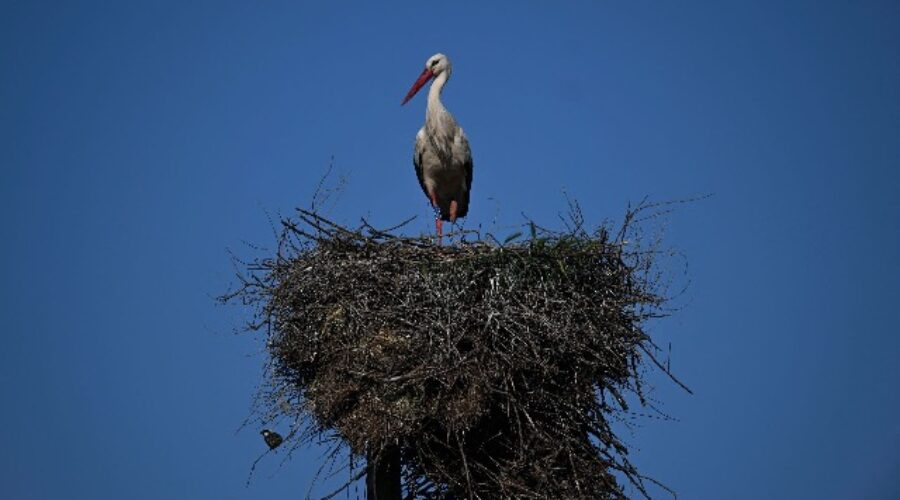Portugal’s white stork numbers boosted
Above a flowering meadow in southern Portugal, three white stork nestlings click their beaks, adding to the chorus of a thriving stork population that has settled year-round in the country.
The long-legged birds have traditionally migrated from Europe in the autumn, heading south to spend winter in sub-Saharan Africa before returning in springtime to breed. But abundant food from landfill sites, coupled with warmer weather due to climate change, has led the vast majority of breeding-age storks in Portugal to skip this arduous journey and stay put all year.
In spring and summer they often nest on chimneys or electricity pylons, which humans have helped make safer for them.
White storks were considered an endangered species in Portugal as recently as the turn of the century. Happily, the number of breeding pairs has almost doubled in the last decade, rising from around 12,000 pairs 10 years ago to around 20,000 pairs today, according to scientific estimates.
For the past six years, scientists from the University of Porto’s Research Centre in Biodiversity and Genetic Resources (CIBIO) have been tracking the behavior of a group of White Storks, thanks to tiny satellite tags attached to their backs.
Around 80 percent of Portugal’s white storks stay permanently in the country, avoiding the dangers associated with migration, said Ines Catry, a CIBIO biologist. Juvenile storks still follow the instinct to fly to Africa for winter but “as time goes by they stop migrating,” she said. Older, breeding birds tend to stay put.
The change in migratory habits is linked in part to climate change and the year-round availability of food in Portugal. The birds have an abundant year-round supply of food from Portuguese rubbish tips, Catry said.
“They are very dependent on waste from rubbish tips”, she explained, adding that white storks were “highly adaptable and have been able to benefit from coexistence with humans.”
In addition, milder weather conditions in southern Portugal in winter are now similar to those which the birds find in Africa, Catry said.
After dropping considerably – mainly due to drought in Africa’s Sahel region, which decimated their food supplies – the number of storks began creeping back up in Portugal in the 1980s. The birds found conditions more favorable in Portugal than in Africa. Electricity pylons dotted along roads have become a favorite. A single pylon can sometimes host around 30 nests.
Over the past two decades, Portugal’s electricity grid operator REN has taken steps to reduce the risk of storks being electrocuted, especially when building nests, and to prevent power cuts. These include installing platforms on metal pylons for the birds to use for nest building.
Almost a quarter of white stork nests can now be found on these platforms, sometimes dubbed “stork nurseries”. Before the breeding season, specialized teams clean the platforms, move nests if necessary and repair metal grids set up to keep storks away from high-voltage power cables.
“We have been working here for more than 20 years on making our equipment compatible with the presence of storks. We’re used to it,” said Francisco Parada, head of environmental safety at REN.
The storks seem to flourish as a result, he said, with the number of birds nesting on these platforms “quadrupling” in the past two decades.


